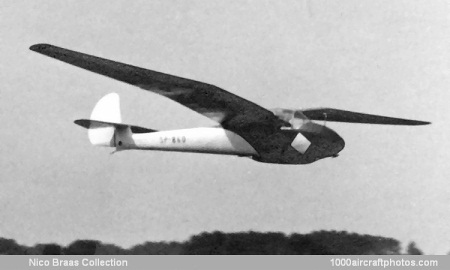The SP-860 went to the Netherlands at the end of July with the Polish Scouts' contingent for the 1937 (Fifth) Jamboree, whilst the SP-863 appeared at the Fifth National Glider Contest at Inowroclaw, which began on August 5. The SG-7 was contemporary with the Orlik and the P.W.S.101, and, compared with them, made better use of lower speeds and was designed for greater stick forces to permit smoother flights in turbulent conditions and in cloud, but its overall performance and maneuverability were rather inferior.
As the design did not meet in full the new structural demands for cloud flying which came into force in Poland in 1938, the SG-7 was to be modified to the required standard by S.W.S. (Slaskie Warsztaty Szybowcowe, Silesian Gliding Workshops) of Bielsko, and a new development, the SG-7bis, was being built in 1939. The outbreak of war prevented completion of this work. The war also cut short the construction of the SG-8 powered glider prototype, the last of Grzeszczyk's designs.
The SG-7 was a two-seat high-performance sailplane of wooden construction. The gull-type wing was a divided single-spar cantilever structure with a diagonal supplementary spar and plywood D leading edge and was covered aft of the spars with fabric. Joined at the center line, it was attached to the fuselage top. The fuselage was an oval-section plywood semi-monocoque and had a fully-enclosed cockpit. The tail unit, incorporating an integral plywood fin, was a conventional cantilever structure, and a pneumatically-sprung skid constituted the landing gear.
